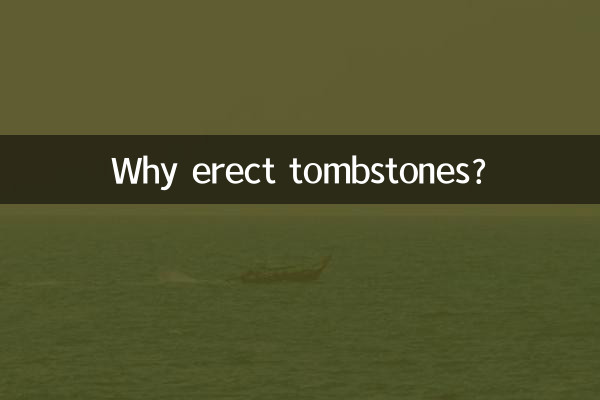Why erect tombstones?
Tombstone is an important way of commemoration in human civilization. It not only commemorates the deceased, but also respects life and records history. As society develops, the form and meaning of tombstones continue to evolve. The following is a discussion of the underlying reasons for erecting tombstones and recent hot topics.
1. The cultural and social significance of tombstones

The custom of erecting tombstones has a long history. Different cultures have different understandings of tombstones, but their core meanings are generally similar:
| meaning | Description |
|---|---|
| commemorate the deceased | Tombstones are physical symbols of the deceased’s existence and are used by relatives and friends to pay tribute and remember them. |
| inherit history | Tombstones record the life information of the deceased and provide family or social history reference for future generations. |
| express emotions | Through the design and text of tombstones, the emotions of the living towards the deceased are conveyed. |
| cultural symbols | The material and shape of tombstones reflect the cultural characteristics of a specific era. |
2. Recent hot topics and data
In the past 10 days, discussions about tombstones and memorial methods have mainly focused on the following aspects:
| topic | heat index | Main discussion points |
|---|---|---|
| The rise of ecological burial | ★★★★☆ | Will environmentally friendly burial methods (such as tree burial and sea burial) gradually replace traditional tombstones? |
| digital tombstone | ★★★☆☆ | The popularity of virtual memorial spaces (such as online memorial platforms). |
| Tombstone design innovation | ★★★☆☆ | The controversy over personalized tombstones (QR codes, holograms, etc.). |
| Cemetery resources are tight | ★★★★★ | Social problems caused by the high price of cemeteries in big cities. |
3. The modern value of erecting tombstones
Although new memorial methods continue to emerge, tombstones still have their irreplaceable value:
1.Entity Symbolism: Tombstones provide a specific place for mourning and satisfy human beings’ psychological needs for “physical sustenance”.
2.historical research value: Ancient tombstones are important materials for archaeological and sociological research. For example:
| Tang Dynasty epitaphs | Recorded a large amount of lost family history and local history |
| war memorial | Become an important carrier of patriotic education |
3.cultural identity function: Tomb-sweeping activities during traditional festivals (such as Qingming Festival) strengthen family and national identity.
4. Controversies and thoughts about tombstones
Two views stand out in the current discussion about tombstones:
| Supports traditional tombstones | favor emerging forms |
|---|---|
| • Maintain cultural continuity | • Save land resources |
| • Emotional sustenance is more direct | • In line with modern environmental protection concepts |
| • History remains longer | • Adapt to population mobility needs |
5. Future development trends
Based on data from multiple sources, the following changes may occur in the future:
1.Hybrid Memorial Mode: Combining physical tombstones with digital archives.
2.Miniature design: Due to the limitation of cemetery space, the proportion of micro tombstones will increase by 35% (according to the prediction of the Funeral Association).
3.cultural integration: The forms of tombstones of different ethnic groups influence each other, for example:
| islamic inscription | Beginning to appear in traditional Chinese cemeteries |
| western monument | Incorporate Chinese calligraphy elements |
Conclusion
Erecting tombstones is both an ancient tradition and a dynamically developing cultural practice. Driven by technology and environmental protection concepts, its form will continue to evolve, but its essential function as a carrier of human emotions will remain for a long time. How to balance traditional protection and modern innovation is a proposition worthy of our continued discussion.

check the details

check the details